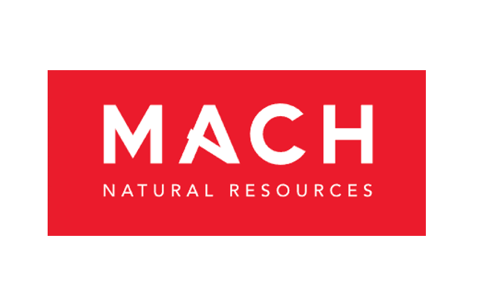July 2025 marked a major strategic move for Mach Natural Resources LP (NYSE: MNR) as the company entered into definitive agreements to acquire a significant package of oil and gas assets from Sabinal Energy, LLC, alongside assets from IKAV Energy Inc. The package — totaling $1.3 billion — positions Mach as a deeper, long-term player in one of the Permian Basin’s most storied but increasingly attractive zones: the Northwest Shelf (NWS).
Recent Texas air-permit filings show how Mach is actively formalizing ownership transitions and preparing inherited infrastructure for continued development across classic NWS fields such as Slaughter, Levelland, and DeLoache. These fields form the backbone of the Northwest Shelf’s long-life production profile.
Advertisment
Northwest Shelf (NWS): A Mature but Strategically Important Corner of the Permian
While overshadowed by the higher-profile Delaware and Midland sub-basins, the Northwest Shelf remains one of the Permian’s most reliable producing regions — distinguished by long-lateral horizontal redevelopment, strong CO₂-flood enhanced oil recovery (EOR), and lower cost structure.
📍 1. Where the NWS Sits
The Northwest Shelf spans:
Texas Counties
- Hockley
- Cochran
- Yoakum
- Terry
- Gaines
Adjacent New Mexico
- Lea
- Roosevelt
Key Towns
- Levelland
- Seminole
- Plains
- Morton
- Sundown
Historically, this region includes iconic conventional units such as Slaughter, Levelland, Hockley, Hobbs, and Wasson.
🛢️ 2. Geology & Reservoir Landscape
The NWS differs from the Delaware/Midland basins with shallower targets and broad, conventional fields.
Primary Reservoirs
- San Andres Formation (the dominant NWS play)
- Clearfork
- Glorieta
- Wichita–Albany
- Waddell / Slaughter / Levelland zones
Key Characteristics
- Shallower drilling depths → lower drilling and completion costs
- High CO₂ flood recoveries
- Strong performance in EOR and long-life waterfloods
- Surge in horizontal San Andres redevelopment over the last decade
These characteristics make the NWS a low-risk, high-longevity asset class, especially attractive to operators aiming for stable returns.
🏭 3. Who’s Operating Here Today
Major and mid-tier operators remain active, including:
- Occidental Petroleum (Oxy) — the dominant EOR operator
- Chevron — legacy Wasson/Slaughter positions
- V-F Petroleum — active San Andres and Clearfork
- Texland Petroleum — consistent horizontal drilling
- Permian Resources + smaller independents
Your permit file confirms that V-F and Texland are actively drilling renewed NWS activity in Slaughter Field and Clearfork.
Activity Themes
- Refracs & re-entries
- Horizontal redevelopment in San Andres
- Steady, optimization-driven drilling
- Robust CO₂ flood economics
🚚 4. Infrastructure Strength
The NWS benefits from 70+ years of midstream and oilfield infrastructure:
- Dense CO₂ pipeline network (e.g., Cortez Pipeline)
- Extensive water-handling facilities
- Gas gathering, legacy tank batteries, and trunklines
- Excellent service-company proximity (Midland–Odessa)
- Strong electrical and road access
This infrastructure significantly reduces operating costs — a key factor in Mach’s acquisition calculus.
💰 5. Economics of the Northwest Shelf
Compared to unconventional shale, the NWS offers:
- Lower CapEx per well
- Lower decline rates
- Predictable EOR-driven production
- Higher recovery factors through CO₂ flooding
- Consistent returns even at lower commodity prices
While the Delaware Basin wins on peak initial production, the NWS wins on longevity, lower cost structure, and steady cash flow.
🌱 6. CCUS & the Future of the NWS
The Northwest Shelf is emerging as a strategic carbon-management zone:
- Oxy’s CO₂-EOR + CCUS integration relies heavily on NWS reservoirs
- Existing CO₂ pipelines can support dedicated sequestration
- Large, mature fields provide ideal long-term injection geology
- Several commercial CO₂ storage projects are under evaluation
The NWS is poised to become a low-carbon oil hub — and Mach’s footprint positions it to participate directly in this transition.
🔎 Mach’s 2025 Air-Permit Filings: What the Data Shows
Your attached air-permit file (Mach Resources (BCE-MACH LLC) AP.csv) provides an important inside look at Mach’s takeover of Sabinal’s Northwest Shelf assets.
All permits are categorized as:
“AIR NEW SOURCE REVIEW (NSR) CHANGE OF OWNERSHIP”
Project Type: OWNCHANGE
Status: COMPLETE (Filed Nov 13–18, 2025)
Region: REGION 02 – Lubbock
County: Hockley (Slaughter/Levelland area)
✔️ What This Means
These filings indicate:
- Mach is formalizing control of tank batteries, satellites, and production facilities previously owned by Sabinal Energy Operating LLC
- The assets are classic NWS field-level facilities:
Bob Slaughter Block, DeLoache Satellites, Gunbarrels, and other associated production sites - Permits show EXEMPT classifications, consistent with routine operations, minor upgrades, or structural ownership change
Representative Permit Summaries
(From your CSV)
Facility Previous Owner County Project Status Notes Bob Slaughter Block Sabinal Energy Operating LLC Hockley COMPLETE Ownership change filed; a key San Andres EOR unit DeLoache Satellite 2 Sabinal Hockley COMPLETE Classic tank battery/satellite facility DeLoache Satellite 4 Sabinal Hockley COMPLETE Multiple permit entries confirming transition Gunbarrels Facility Sabinal Hockley COMPLETE Associated with Slaughter Field water/oil separation Other smaller batteries Sabinal Hockley COMPLETE All under Mach Resources, BCE-Mach LLC account
Key Observations:
- These facilities sit in Slaughter Field, a cornerstone CO₂-EOR and San Andres redevelopment area
- All permits are EXEMPT, indicating no major emissions-changing expansions
- Activity aligns with Mach’s goal to operate, optimize, and extend life of mature NWS assets
In short:
Mach is consolidating operational control of Sabinal’s field-level infrastructure — enabling rapid optimization, redevelopment, and integration into their low-risk portfolio.
🎯 Why Mach’s Move Matters
Mach’s NWS expansion is strategically aligned with:
✔️ Long-life, low-decline oil production
Perfect for private equity-backed cash-flow strategies.
✔️ Strong fit for CO₂-EOR
The NWS remains one of North America’s most economic EOR zones.
✔️ High infrastructure maturity
Lower operating costs and faster deployment.
✔️ Potential CCUS upside
Future regulatory credits and low-carbon barrels.
Combined with the clean transition of facility ownership shown in the air permits, Mach is positioning itself for a multi-decade development runway across the Northwest Shelf.
Final Takeaway
Mach Natural Resources’ $1.3 billion Permian package is more than a simple acquisition — it is a strategic entry into one of the Permian’s most stable, infrastructure-rich, and CCUS-ready regions. The air-permit data confirms rapid consolidation of Sabinal’s facilities, enabling Mach to immediately operate, optimize, and expand within classic NWS fields like Slaughter, Levelland, and DeLoache.
As the Permian Basin continues its evolution toward lower-carbon barrels, high-efficiency redevelopment, and CO₂-EOR expansion, the Northwest Shelf is once again becoming one of the most compelling corners of the basin — and Mach is now positioned at the center of it.
Advertisment


